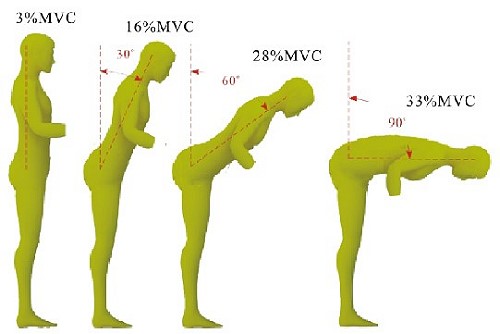Small Changes Make Big Differences: Improvement Techniques for Workplace Equipment
- Last updated:2021-10-18
Small Changes Make Big Differences: Improvement Techniques for Workplace Equipment
|
News From:Institute of Occupational Safety and Health
|
|
Date:2008-12-31
|
|
Working for long periods of time with a poor posture can easily cause musculoskeletal injury. The Institute of Occupational Safety and Health (IOSH), a unit of Taiwan’s Council of Labor Affairs, has used to concept of “functional work posture” to improve facilities in the workplace, making “small changes”—ergonomic improvements--that not only reduce the rate of musculoskeletal injury by more than half but also boost production by over 100%. These are big “differences” indeed! Causes of Musculoskeletal Injury Most people experience muscular or skeletal injuries at some time in their lives. According to a survey carried out by IOSH, about 40% of the sufferers feel that their injuries are work-related. The main cause of these injuries is a bad working posture, which creates pain, fatigue, or disease in the neck, shoulders, waist, wrist, or other joints. To eliminate these symptoms, we must use ergonomic techniques to improve the workplace. Ergonomic Working Postures IOSH has been carrying out a guidance plan for workplace improvement since 2005, and has compiled a booklet entitled “Collection of Ergonomical Working Postures” to serve as an index for workplace improvement (see illustrations below). The booklet contains 100 model workplace design illustrations that incorporate the concept of ergonomic working posture and are aimed at reducing musculoskeletal injuries caused by work. The Concept of Functional Working Posture A functional working posture is one that is natural and energy-saving. The basic idea is to keep the upper body straight as much as possible and avoid too much bending of the neck or the waist, and to avoid imposing an excessive burden on the hands and arms by keeping the body as close to the work as possible. This collection of illustrations follows the concept of functional working posture in the design of workplaces that conform to ergonomic principles. They entice workers to maintain a working posture that keeps the body upright and avoids bending of the neck and the waist.
Use of Illustrations, and Improvement Results We can see the results of workplace improvement from actual cases involving operations that have received guidance in recent years. Case 1, “Container Filling Operations in a Paint Factory”: Workers who were required to crouch with their waist bent for long periods of time while filling paint cans were subject to symptoms of pain and discomfort in the legs, waist, and arms. Following on-site improvement guidance, the paint-filling platforms were raised higher and the symptoms of pain and discomfort were greatly alleviated. Case 2, “Meat Cutting Operations in a Meat Processing Plant”: Meat cutters who had to do this work for long periods of time suffered fatigue and aching of the wrists caused by poor cutting tools and the recoil of the table and chopping block. Following on-site improvement guidance and a redesign of work tables, the wrist pain and discomfort were greatly reduced and production increased from 35 boxes to 60 boxes per hour, an improvement of 71%. The time needed to produce 1,000 boxes was cut from 29 hours to 17 hours, and annual salary payments were reduced by NT$432,000—almost enough to pay one worker for a whole year. Case 3, “Weighing of Materials in a Bread Processing Plant”: Workers who |
- Source:
- Publication Date:2008-12-31
- Count Views:


